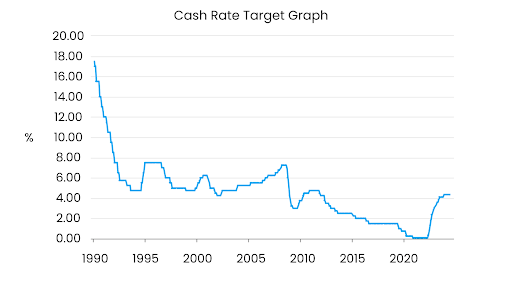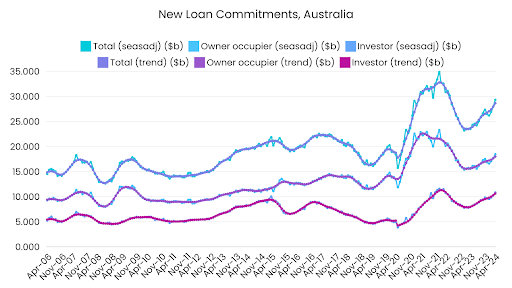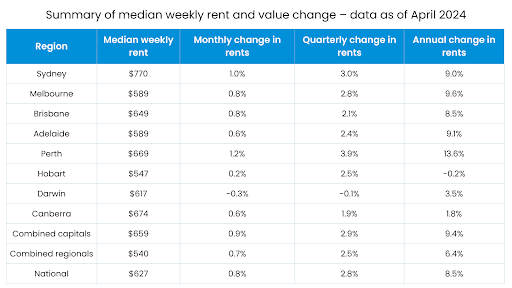Over the past decade, Australian property prices have soared due to low interest rates, limited housing supply, and strong demand from both domestic and international buyers. The RBA (Reserve Bank of Australia) lowered the interest rates several times between 2011 and 2019, reaching a historic low of 0.75% by October 2019. During this time, house prices increased a lot, especially in major cities like Melbourne and Sydney.
At Unconditional Finance, we prioritise empowering our clients with expert financial advice and tailored solutions to achieve their property ownership goals. We are dedicated to giving each client personal help, making buying a home easy and stress-free.
Urbanisation and population growth in key metropolitan areas outpaced the construction of new homes. The Australian Bureau of Statistics (ABS) shows Sydney’s population grew by 1.5% annually on average from 2011 to 2021, while housing supply lagged.
As a leading authority in mortgage broking, Unconditional Finance is an expert in home loans. We use our knowledge and customer-first approach to help you understand the Australian property market. Our team is here to find the best loan options for you, helping you make smart choices.
Government policies and incentives, such as the First Home Owner Grant, and foreign investment, especially from Chinese buyers, have further fueled demand. Chinese buyers accounted for 25% of all foreign investment in Australian real estate in 2022.
In 2024, these dynamics continue to evolve, affecting the real estate market. This blog explores the current factors contributing to high property prices in Australia, focusing on interest rates, the rental market, and government housing initiatives.
Interest Rates and Housing Loans
Stabilisation of Interest Rates in 2024
In 2024, interest rates in Australia have stabilised after a period of fluctuations. The RBA has kept the cash rate steady at 4.35% to balance inflation and economic growth, providing a more predictable environment for home loan approvals. Philip Lowe, Governor of the RBA, emphasised that stabilising interest rates aims to support economic growth while maintaining housing affordability.
The RBA’s approach also considers the global economic environment, where synchronised monetary policies and international capital flows impact domestic interest rates. Australia’s integration into global financial markets means that decisions made by other major central banks can indirectly influence Australian property prices.

Source: Cash Rate Target, Reserve Bank of Australia (RBA), 2024
Impact on Home Loan Approvals and Property Price Trends
Steady interest rates have influenced home loan approvals positively, with a 4% increase in the first three months of 2024 compared to the same period in 2023. This increase has sustained demand in the property market, contributing to high property prices.
Current interest rates affect different population segments in various ways. First-time buyers benefit from predictability and affordability, while investors find stable rates conducive to long-term planning and investment. However, for those looking to refinance, stable rates mean fewer opportunities for significant interest rate reductions, leading to steady borrowing costs.

Source: New Loan Commitments, Australian Bureau of Statistics, 2024
Rising Rental Market
Continued Significant Growth in the Rental Market
The rental market in Australia continues to grow significantly in 2024, with double-digit rent increases expected. This trend is driven by high demand and limited rental supply.
Technological advancements in property management, such as AI-driven tenant screening and smart home technologies, are enhancing the rental experience. These innovations attract tech-savvy renters willing to pay premium prices for modern amenities, further driving up rental values.

Source: Median Weekly Rent Value Across All Australian, CoreLogic, 2024
Factors Driving Rental Market Growth
Several factors contribute to the booming rental market, each influencing the dynamics and trends seen in cities and suburbs:
- Urbanisation: Major cities like Sydney, Melbourne, and Brisbane continue to attract a growing population, including international students and professionals. This influx drives demand for rental properties, particularly in areas with robust public transportation and amenities.
- Limited Supply: Building new rental homes has not kept pace with the demand, leading to increased competition for existing rental units and driving up prices.
- Economic and Global Influences: Economic recovery post-pandemic has increased migration to urban areas for better job opportunities. Additionally, international investors, particularly from Asia, view Australian property as a safe and profitable investment, which adds pressure to property prices.
- Investment Trends: High rental yields encourage more competition for available properties. Investors are attracted to the rental market because it offers a steady income and the chance for property value to go up.
- Technological Advancements in Property Management: Advances in technology, such as AI and big data analytics, are revolutionising property management and investment strategies. These technologies help investors make informed decisions, potentially driving more efficient markets but also increasing competition for desirable properties.
- Environmental and Sustainability Factors: Sustainability is becoming a key consideration in the property market. Energy-efficient homes and green building certifications are increasingly valued, impacting property prices and demand. Government incentives for sustainable construction can drive this trend further.
- Socio-Economic Disparities: The disparity between high-income and low-income households is widening. While high-income families can afford rising property prices and rents, low-income households face significant financial strain, increasing the need for affordable housing solutions.
- Future Projections: Experts predict that property prices will keep rising slowly as the market adjusts to economic and regulatory changes. Keeping an eye on interest rate policies and global economic trends will be crucial for understanding future market dynamics.
- Community Impact and Gentrification: As property prices rise, gentrification becomes a significant issue. Long-term residents may be priced out of their neighbourhoods, leading to socio-cultural shifts and potential community resistance. Addressing these impacts through inclusive urban planning is essential for balanced development.
Implications for Renters
- Young Professionals: Increasing competition for rental properties in prime locations leads to higher living costs and shared accommodations. Young professionals often find themselves competing for limited housing options, resulting in higher rents and sometimes compromising on living standards. The rise of remote work has also impacted rental preferences, with many young professionals seeking properties with home office spaces. This shift has driven demand for larger apartments and houses, contributing to rising rents in urban areas.
- Families: Rising rents in suburban areas put additional financial pressure, making it challenging to find suitable and affordable housing. Families may have to move farther from city centres, impacting commute times and access to amenities. School districts and access to quality education are significant factors for families. Areas with top-rated schools see higher demand, leading to increased rental prices and further limiting affordable options for families.
- Retirees: Retirees on fixed incomes struggle with increasing rental costs, often considering downsizing or moving to less expensive regions. The rising cost of living in urban areas can force retirees to relocate to more affordable areas, away from family and established communities. Retirees are increasingly looking into co-living arrangements and senior-specific housing communities that offer social engagement and shared resources, helping to manage costs and improve quality of life.
Government Housing Initiatives
Recent Government Plans for Social Housing
The Australian government has started several initiatives aimed at increasing social housing availability, addressing the pressing need for affordable housing options:
Housing Australia Future Fund
The Housing Australia Future Fund (HAFF) is a $10 billion investment fund started by the Federal Government, managed by the Future Fund. The income generated from this fund will be used to build 20,000 new social homes and 10,000 new affordable homes in five years, including homes for people with urgent needs. This initiative focuses on creating sustainable and energy-efficient homes, ensuring long-term benefits for both residents and the environment.
National Housing and Homelessness Agreement (NHHA)
The National Housing and Homelessness Agreement (NHHA) allocates an additional $1.8 billion annually to support state and territory governments in their efforts to address homelessness and improve social housing. This agreement ensures a collaborative approach, where federal and state governments work together to improve housing services and create programs that meet the needs of local communities.
Community Housing Growth Fund
The Community Housing Growth Fund is a $2 billion initiative designed to support community housing providers. This fund aims to expand the capacity of community housing organisations, enabling them to develop more affordable housing projects. By empowering these providers, the government seeks to foster innovative solutions and partnerships that address housing shortages and support community well-being.
Comparison with Past Initiatives
Compared to past initiatives, the current plans are more comprehensive and better funded. For example:
- Previous Initiatives: The National Rental Affordability Scheme (NRAS) introduced in 2008 aimed to increase the supply of affordable rental dwellings. However, it faced criticism for not meeting targets and was eventually phased out in 2014.
- Current Plans: The Housing Australia Future Fund and NHHA are more ambitious in scope, with clear targets and substantial budget allocations. These plans are designed to address both immediate and long-term housing needs, ensuring a more sustained impact on housing affordability.
Expected Impacts and Public Reception
Positive Impacts:
- Increased social and affordable housing stock, reducing rental market pressure.
- Support for low-income households, leading to improved social outcomes and economic stability.
- Stimulus for the construction industry, creating jobs and boosting economic activity.
Negative Scenarios:
- Potential delays in project implementation due to bureaucratic hurdles or funding shortfalls.
- Risk of not meeting projected targets, leading to continued housing affordability pressures.
- Possible opposition from local communities concerned about changes in neighbourhood dynamics.
Conclusion
The Australian property market in 2024 is shaped by a combination of stabilised interest rates, a booming rental market, and proactive government housing initiatives. These factors collectively sustain high property prices, with projections indicating continued demand and price pressures in the foreseeable future. Understanding these dynamics is crucial for buyers, investors, and policymakers as they navigate the evolving real estate landscape.
Key Points Summary
- Stabilised Interest Rates: The RBA has kept the cash rate steady at 4.35%, providing a predictable environment for home loan approvals and sustaining property demand.
- Booming Rental Market: High demand and limited supply are driving significant rent increases. Urbanisation, economic recovery, and technological advancements are key contributors to this trend.
- Government Initiatives: The Housing Australia Future Fund, NHHA, and Community Housing Growth Fund aim to increase social and affordable housing stock, reduce rental market pressure, and improve long-term housing affordability.
Stay Ahead in the Australian Property Market
Understanding the complexities of the Australian property market is crucial for making informed decisions. Whether you’re a prospective buyer, investor, or policymaker, staying informed on market trends and government initiatives is essential.
For Prospective Buyers:
- Tip: Monitor interest rate trends and explore government housing initiatives to find the best opportunities for affordable homeownership.
- Action: Consult with a financial advisor or mortgage broker to understand your options and make informed decisions.
For Investors:
- Tip: Keep an eye on rental market trends and government policies to identify lucrative investment opportunities.
- Action: Evaluate the potential impact of government policies on your investment strategy and seek professional advice to optimise your portfolio.
For Policymakers:
- Tip: Focus on implementing housing initiatives effectively to meet targets and support community needs.
- Action: Engage with local communities to address concerns and ensure positive reception of housing projects.
Stay informed about market trends and consider professional advice when making real estate decisions. For the latest updates on the Australian property market and expert insights, follow our blog and connect with industry professionals to navigate the evolving landscape with confidence.